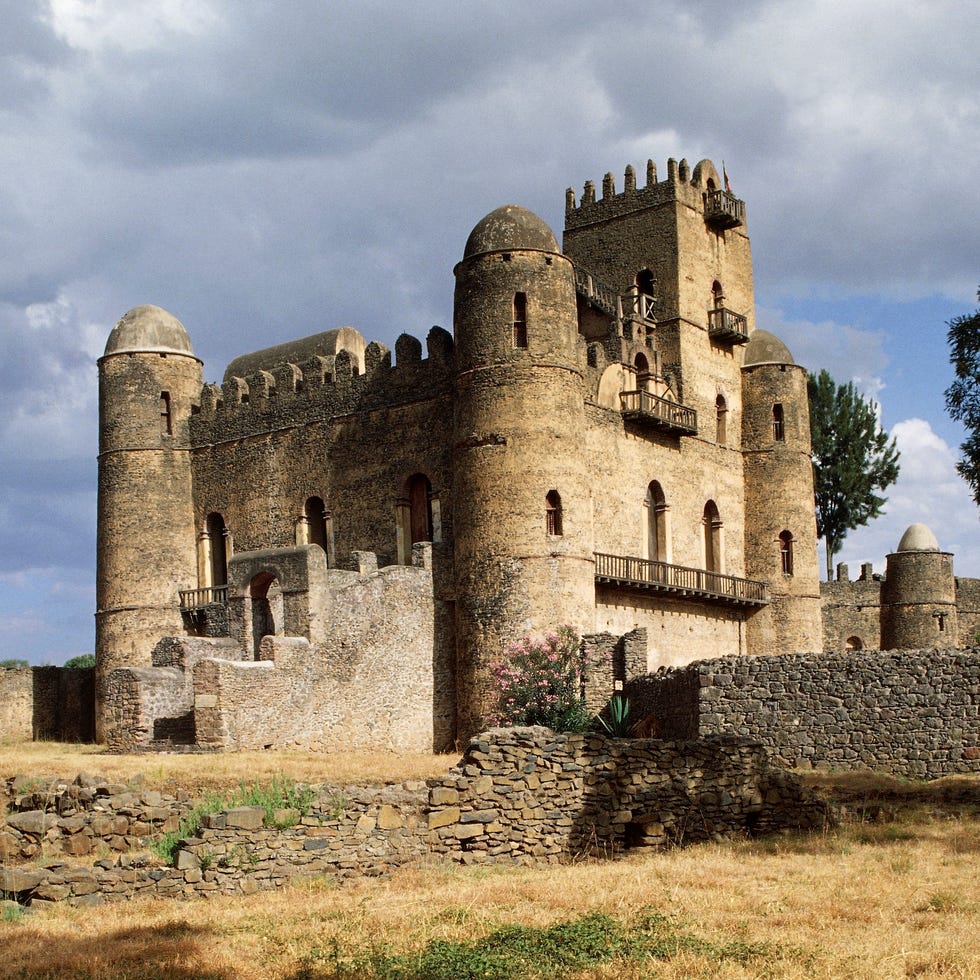
Fasil Ghebbi, located in Gondar, Ethiopia, is a UNESCO World Heritage Site and one of the country’s most significant historical landmarks. Here’s an overview of this remarkable fortress complex:
History: Fasil Ghebbi was founded in the 17th century by Emperor Fasilides (Fasil) and served as the capital of the Ethiopian Empire during the Gondarine period. It was constructed between the late 16th and early 17th centuries and became a center of political, religious, and cultural activity in the region.
Architecture: The architecture of Fasil Ghebbi is characterized by a unique blend of Ethiopian, Arabic, and European influences. The complex is surrounded by a high stone wall with twelve entrances, each representing one of the twelve apostles of Christianity. Within the walls, visitors can explore a series of palaces, churches, baths, and other structures, many of which are built from stone and adorned with intricate carvings and decorations.
Palaces: One of the most prominent features of Fasil Ghebbi is the Royal Enclosure, which contains several palaces built by different emperors over the centuries. These palaces include the Palace of Fasilides, the Palace of Iyasu I, the Palace of Dawit III, and the Library of Yohannes I. Each palace reflects the architectural styles and tastes of the period in which it was built, ranging from simple and utilitarian to elaborate and ornate.
Religious Buildings: Fasil Ghebbi is also home to several historic churches and monasteries, including the Church of Debre Berhan Selassie. This church, renowned for its stunning frescoes depicting biblical scenes and angels, is considered one of the finest examples of Ethiopian Orthodox Christian art.
Cultural Significance: Fasil Ghebbi is of immense cultural significance to the people of Ethiopia and is regarded as a symbol of the country’s rich history and heritage. It played a pivotal role in the development of Ethiopian civilization and continues to be a source of pride and inspiration for Ethiopians today.
Tourism and Preservation: Fasil Ghebbi is open to visitors year-round, allowing them to explore its ancient ruins and learn about its history through guided tours and interpretive exhibits. Efforts are ongoing to preserve and protect the site from deterioration and damage, ensuring that future generations will be able to appreciate its beauty and historical significance.
Overall, Fasil Ghebbi stands as a testament to Ethiopia’s rich cultural legacy and the enduring legacy of its emperors. Its majestic architecture, rich history, and cultural significance make it a must-visit destination for travelers interested in exploring the ancient civilizations of Africa.
